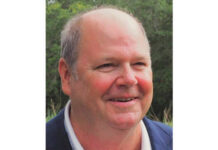Raymond Cummings says it’s just coincidence, that his suggestion that county and school officials talk about how to find more local funding for the Public Schools of Robeson County is not related to a story in this newspaper a week ago — and an editorial in this space the same day chiding the commissioners for being so richly paid while our school system gasps for dollars.
But the suggestion came two days after this newspaper’s reporting — and the problem of too few local dollars for the school system is not new, but is decades old. Four times in the last five years, Robeson County has ranked dead last in local funding out of 115 North Carolina school systems — and we can assure you that the commissioners didn’t need to read this newspaper to know that, so their spring into action is curious.
Cummings wants you to believe that the decision has nothing to do with the fact that he and two other sitting commissioners are facing re-election on March 15, and that any hard questions about school funding can now be answered with — all together now: “Yes, we recognize the problem, and are looking at what can be done without it being a burden on taxpayers. We want to do all we can to support our local schools.”
But school board members say that in December, their plea to the commissioners for more money fell on deaf ears. What has changed is that you now know how poorly our schools are funded locally.
Our county commissioners provide about $500 for each of the 24,000 students in the Public Schools of Robeson County — about a third of the state average — and although the system gets millions of other dollars because the county is poor, more should be done locally. This conversation can’t be had without remembering that our students trail their peers across the state in almost every education metric, except graduation rate, which we believe is suspect. And while more dollars aren’t always the fix, they certainly would help.
We know that the commissioners’ options are limited, that ours is a poor county with a stagnant tax base, and that at 77 cents for every $100 or property, the local tax rate is among the highest in the state. Raising the tax rate is probably political suicide for our commissioners, although we believe the owner of a $100,000 home would gladly pay $20 more a year in property taxes to provide $1.3 million a year more to the schools. But a higher property tax rate also makes it harder to recruit industry, which is the only way to expand the tax base.
We think the possibility of a local sales tax to generate a revenue source is worthy of discussion, but this county already has a local sales tax of a quarter of a cent that was approved by voters in 2010, so there is no guarantee that a Republican-led General Assembly would allow it.
Soon enough, the schools superintendent, the county manager, finance officers for the schools and the county, commissioners and school board members will gather in the same room and try to figure out what can be done. It will be interesting to watch not only what is offered, but how it is timed with the March 15 election.
We are glad that the conversation has started.
If you share that sentiment, you could thank the commissioners — unless you prefer to acknowledge the entity that provoked the conversation. In that case, you are welcome.








